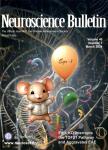Dorsal root ganglion compression as an animal model of sciatica and low back pain
Dorsal root ganglion compression as an animal model of sciatica and low back pain作者机构:Class 2008 School of Stomatology Department of Cardiology The 323 Military Hospital Xi'an 710054 China Institute of Neuroscience Fourth Military Medical University Xi'an 710032 China
出 版 物:《Neuroscience Bulletin》 (神经科学通报(英文版))
年 卷 期:2012年第28卷第5期
页 面:618-630页
核心收录:
学科分类:0831[工学-生物医学工程(可授工学、理学、医学学位)] 08[工学] 0905[农学-畜牧学] 09[农学] 090501[农学-动物遗传育种与繁殖]
基 金:supported by the National Natural Science Foundation of China(30870829)
主 题:animal model sciatica low back pain dorsal root ganglion excitability cytokine analgesia
摘 要:As sciatica and low back pain are among the most common medical complaints, many studies have duplicated these conditions in animals. Chronic compression of the dorsal root ganglion (CCD) is one of these models. The surgery is simple: after exposing the L4/L5 intervertebral foramina, stainless steel rods are implanted unilaterally, one rod for each vertebra, to chronically compress the lumbar dorsal root ganglion (DRG). Then, CCD can be used to simulate the clinical conditions caused by stenosis, such as a laterally herniated disc or foraminal stenosis. As the intraforaminal implantation of a rod results in neuronal somal hyperexcitability and spontaneous action potentials associated with hyperalgesia, spontaneous pain, and mechanical allodynia, CCD provides an animal model that mimics radicular pain in humans. This review concerns the mechanisms of neuronal hyperexcitability, focusing on various patterns of spontaneous discharge including one possible pain signal for mechanical allodynia - evoked bursting. Also, new data regarding its significant property of maintaining peripheral input are also discussed. Investigations using this animal model will enhance our un-derstanding of the neural mechanisms for low back pain and sciatica. Furthermore, the peripheral location of the DRG fa-cilitates its use as a locus for controlling pain with minimal central effects, in the hope of ultimately uncovering analgesics that block neuropathic pain without influencing physiological pain.



